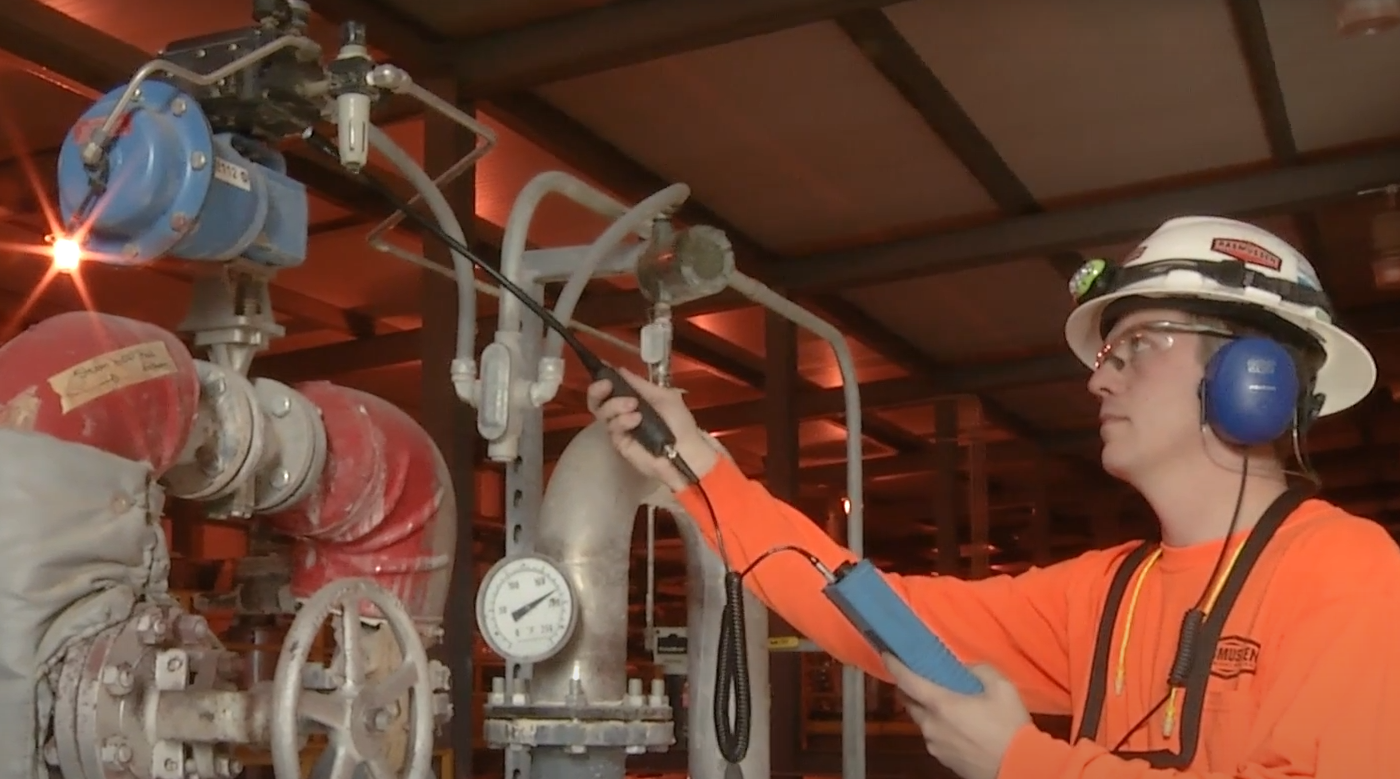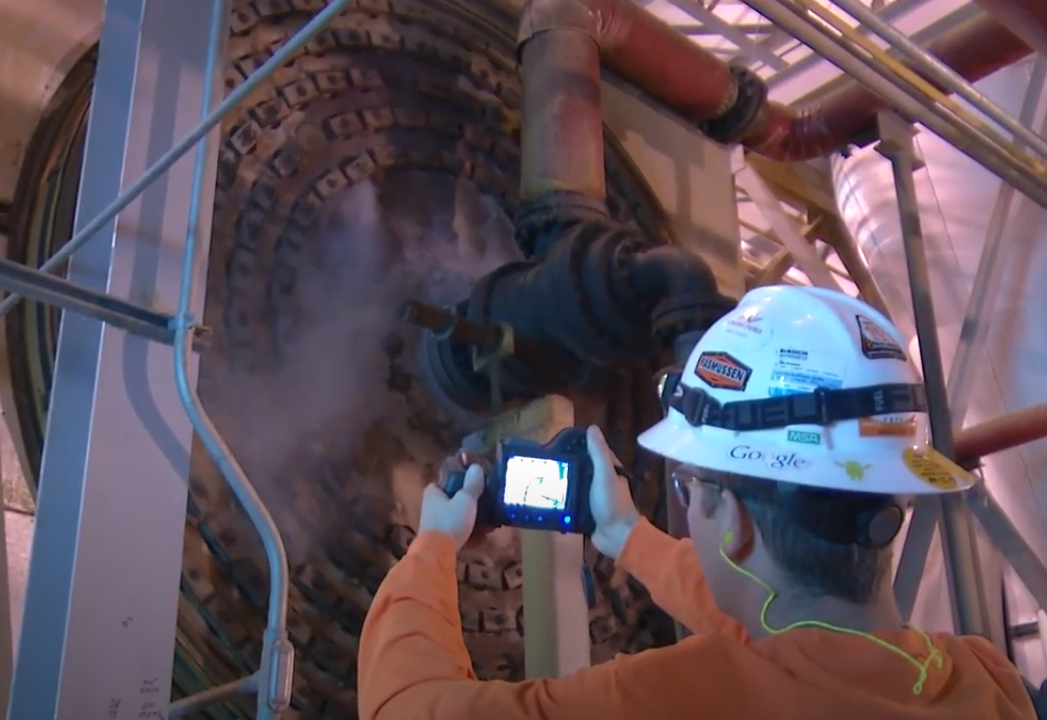There are a number of different techniques used for leak detection. Today however, we are going to focus solely on ultrasonic leak detection or “listening detectors”. (Sniffer type detectors and visual detectors are other common ways to locate leaks.)
An ultrasonic leak detector generates a high frequency, energetic pulse that propagates through materials in the form of waves. When there is discontinuity in the surface (wave path), part of the energy reflects back from the flawed surface.
To begin, place the “wand” or detection end of the leak detector in proximity to pressurized piping. When a leak is detected, an audio signal will be sent to the headphones. Depending on the type of leak detector it may also appear on a screen. The technician can then record the location, size, and decibel level (dB) of the leak. Ultrasonic leak detectors can detect pinhole leaks with as low as 1 psi.


Rasmussen Mechanical technician using Ultrasonic Leak Detection.
Using Ultrasonic Leak Detection At Your Facilities
Regular ultrasonic leak inspections can increase the operational reliability and reduce the costs of pneumatic equipment. We will continuously monitor:
- Compressed air leaks
- Vacuum air leaks
- Valve and trap blow-by-contact
- Monitor slow speed bearing and gear condition-contact.
According to Superior Ultrasonic Instruments:
“A good ultrasonic detector uses an electronic process called “heterodyning” to convert this high frequency leak sound to a lower range. Once there the hissing of the leak can be heard through a set of headphones, and traced to its source. Any turbulent gas will generate ultrasound when it leaks, therefore it does not matter what refrigerant you are leak testing. Ultrasonic detectors will even detect air as it rushes into a system under vacuum.”
Ultrasonic Leak Testing (Real World Example)
On December 28th Rasmussen Mechanical Services performed an Ultrasonic leak scans of the compressed air system in a facility.
After completing the test, we found over 41 leaks. Drain plugs, nipples, pressure regulators, positioner covers, stage fittings as well as gauge manifolds all had leaks. The report included the location and size of each leak along with pictures.
Return On Investment
Most air compressor systems waste +50% of the compressors total output. More so, leaks in a compressed air system lead to increased problems in plant operations. This is due to fluctuating system pressure, excess compressor capacity, and decreased service life.
If your process relies heavily on vacuum and compressed air systems, savings can exceed 30% of the compressor’s energy costs.
This means you can achieve paybacks within 0 to 1.5 years. This payback period is dependent on the size, number, and rate at which you repair the leaks.
LOOKING FOR LEAK DETECTION HELP?
Call the reliability experts at RasMech at 1-800-237-3141. We have experts that can provide help with ultrasonic leak detection as well as a number of other predictive maintenance strategies.



